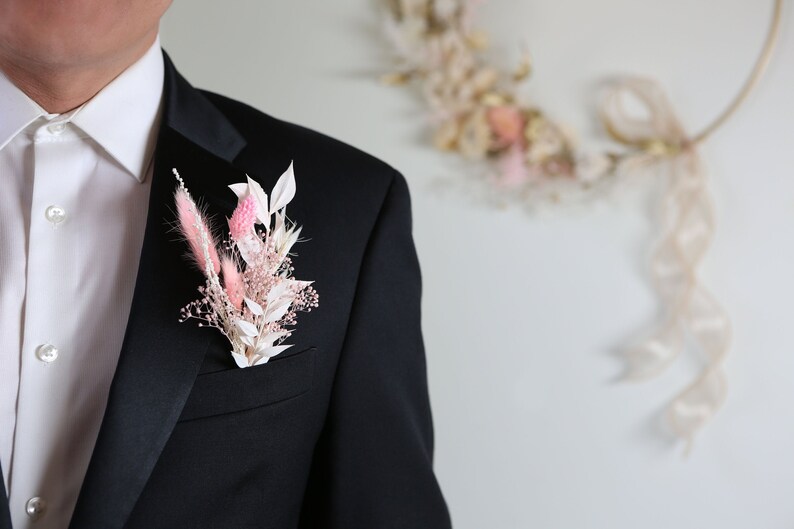When it comes to wedding details, it’s not just about the bride’s bouquet and the venue decor. Every element contributes to the overall ambiance, and one often-overlooked yet significant detail is the men’s boutonniere. A well-chosen boutonniere adds a touch of elegance and personality to the groom’s attire, making it a meaningful accessory for the big day. In this guide, we’ll delve into the world of men’s boutonnieres for weddings, exploring styles, traditions, and tips to help you choose the perfect floral accent for the groom and his groomsmen.
The Significance of Men’s Boutonnieres
A Symbolic Tradition:
The tradition of wearing a boutonniere dates back centuries and carries deep symbolism. Originally worn as a ward against evil spirits, today, it symbolizes the celebration of love and union. The groom’s boutonniere, in particular, holds sentimental value as a reflection of the wedding theme and the couple’s personal style.
Choosing the Right Style
Floral Choices:
Men’s boutonnieres come in various styles, with floral options ranging from classic roses to more unique choices like succulents or wildflowers. Consider the overall wedding theme and color palette when selecting the type of flower, ensuring it complements the bride’s bouquet and other floral arrangements.
Greenery and Foliage:
Incorporating greenery adds texture and depth to the boutonniere. From eucalyptus leaves to sprigs of lavender, the choice of foliage can enhance the overall aesthetic and tie in with the wedding’s natural surroundings.
Coordination with Wedding Theme
Matching the Bridal Bouquet:
For a cohesive look, coordinate the groom’s boutonniere with the bridal bouquet. This doesn’t necessarily mean an exact replica but rather complementary elements in terms of color, style, or specific flowers.
Theme-Specific Boutonnieres:
Align the boutonniere with the wedding theme. For a rustic wedding, opt for wildflowers and twine, while a more formal affair may call for a classic rose or orchid boutonniere.
DIY Boutonniere Ideas
Personal Touch:
Creating a DIY boutonniere can add a personal touch to the groom’s ensemble. Gather a selection of meaningful flowers or incorporate elements that hold sentimental value, such as a small photo charm or a piece of fabric from the bride’s dress.
Step-by-Step Guide:
Provide a step-by-step guide for those considering a DIY approach. Include tips on flower selection, assembly, and preservation to ensure the boutonniere looks fresh throughout the ceremony and reception.
Boutonniere Etiquette
Placement:
The boutonniere is traditionally worn on the left lapel, aligned with the groom’s heart. Ensure proper placement to maintain a polished and symmetrical appearance.
Pinning Techniques:
Include a section on pinning techniques, highlighting the importance of securing the boutonniere properly to prevent it from drooping or falling during the celebration.
Final Touches and Preservation
Timing:
Consider the timing of boutonniere placement to ensure it looks fresh for photographs and throughout the ceremony. Provide guidance on when to pin the boutonnieres to maximize their vibrancy.
Preservation Tips:
Offer tips on preserving the boutonniere as a keepsake. Whether it’s air-drying, pressing, or utilizing floral preservation techniques, preserving the boutonniere allows the groom to cherish a tangible piece of the wedding day.
Conclusion
In conclusion, the men’s boutonniere is a small yet impactful detail that adds a touch of sophistication to the groom’s ensemble. From choosing the right flowers to DIY options and boutonniere etiquette, this guide aims to assist couples in selecting the perfect floral accessory for their wedding day. By understanding the significance and exploring various styles, couples can ensure that the boutonniere becomes a meaningful and cherished symbol of their love and commitment.

